A collection of inspiring news from SCUBA Diving Community
Our aim is to provide a compelling narrative and case for change to inspire people all over the world.
In Conservation
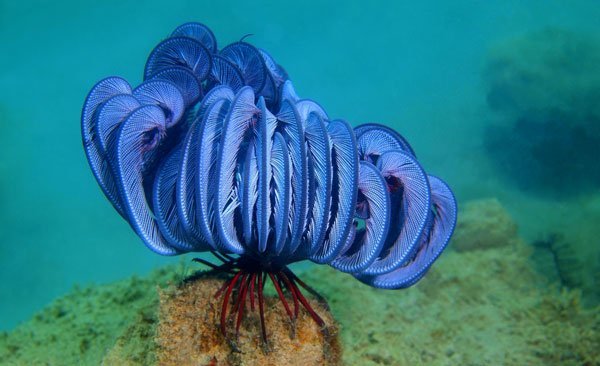
These crazy looking marine animals wave their “feathers” to get around underwater. They like shallow water, but they can sometimes be found on ocean floors up to 9 km below the surface of the water! Swirling their many feathered legs in the water, we can almost imagine what they’d look like floating through the starry galaxy.
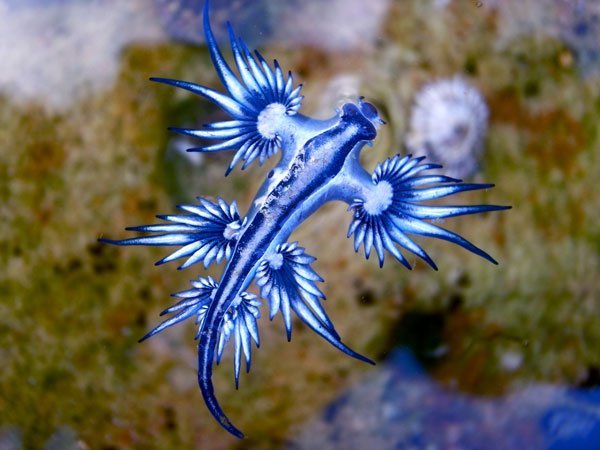
The glaucus atlanticus, aka. the “blue dragon” is a type of stinging sea slug! They actually float upside down on the waves: their blue bellies face up to match the surface, and their silver backs face down to blend in with light shining down. To us, they look like surfing UFO’s!
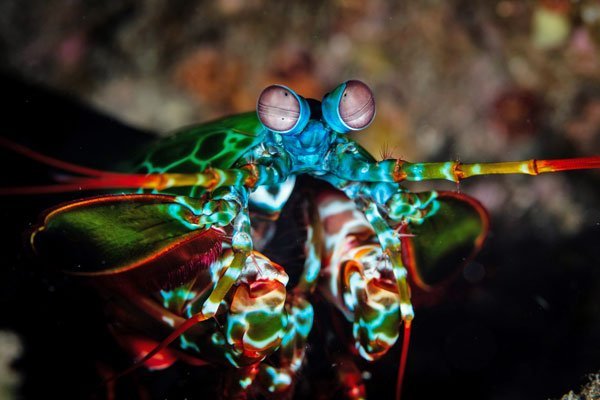
These exotic rainbow warriors may be small but they’re extra mighty crustaceans. Their glowing green backs, red legs, bulging eyes, and long antennas certainly make the mantis shrimp one of the most alien-looking creatures on the planet!
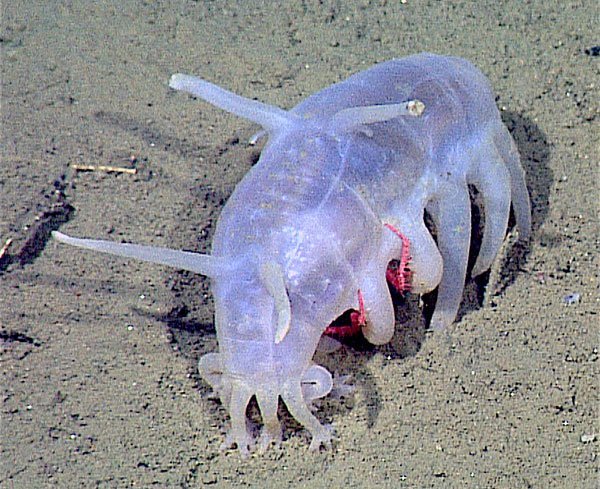
Scotoplanes globosa sheltering a crab. Photo Credit NOAA/Monterey Bay Aquarium Research Institute
Also known as the sea pig, these jelly-like creatures are actually a type of sea cucumber! Unlike the crunchy and delicious green vegetable, this sea cucumber lives in the dark at the bottom of the ocean.
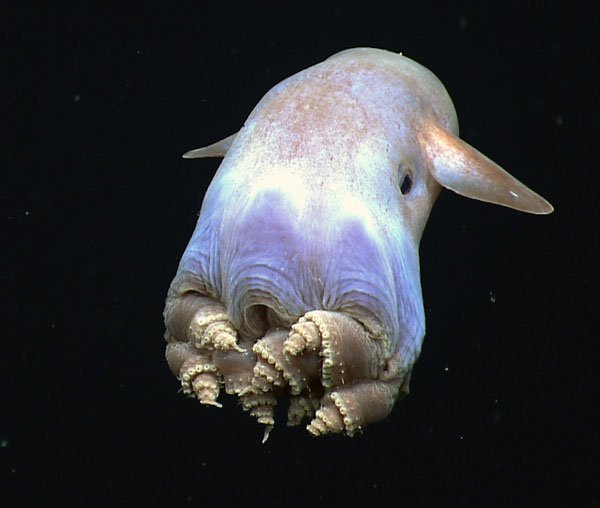
Photo Credit: NOAA Okeanos Explorer
What do you call an octopus wearing socks? A Sock-topus of course! What do you call an octopus with flapping ear-fins? Hm…
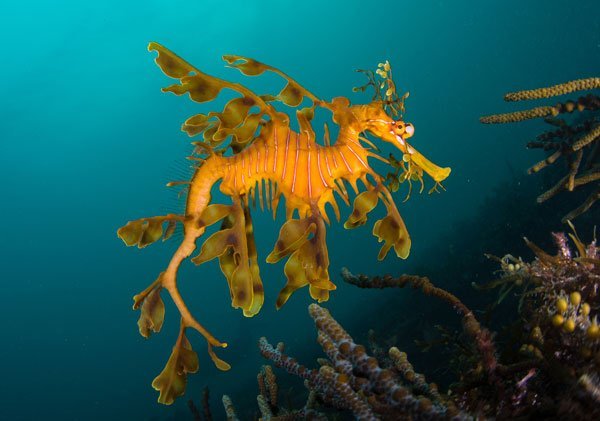
Apparently, not everything that’s leafy grows on plants! You may find this hard to believe, but the leafy sea dragon is actually a type of fish! If you squint your eyes you might be able to see their resemblance to a seahorse, but we think that these guys could fit in just fine on Neptune.
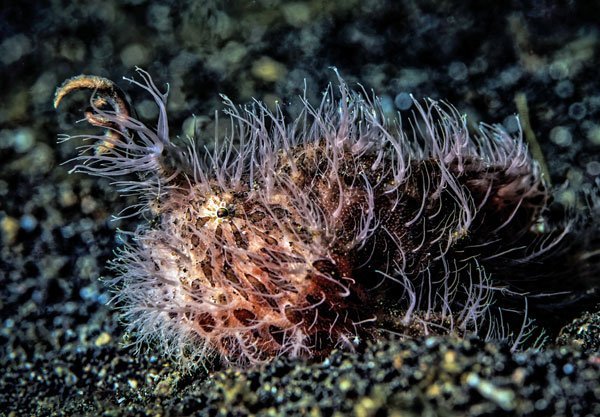
If it’s called a frogfish, does that make it a frog… or a fish? The answer is kind of a combination! Though they’re officially fish, they actually walk along the sea floor on their bottom fins in search of a tasty meal. They may look like monsters in great need of a hairbrush, but the hairy frogfish is actually amazing at hiding and can even change colors to match his surroundings! Sounds like some extraterrestrial powers could be at play here…
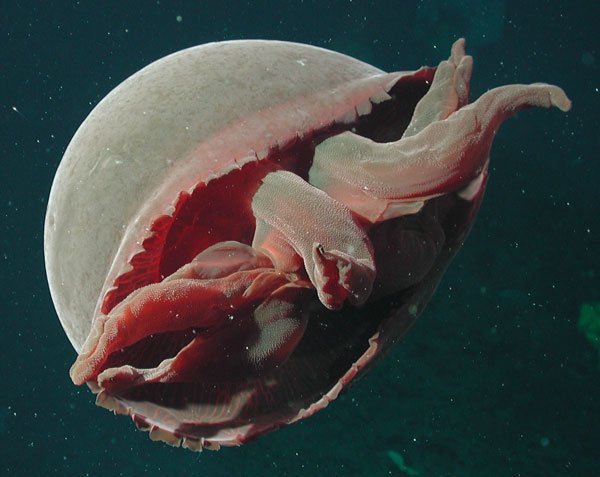
Photo Credit: NOAA/Monterey Bay Aquarium Research Institute
The name of this jelly means “big red”, which perfectly describes this gigantic, ruby-colored monster of the deep. They can grow up to 3 meters across (almost 10 ft), and instead of long trailing tentacles, they have “arms” that are short and stubby.
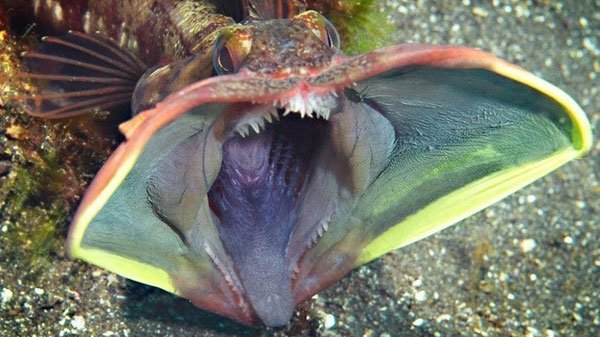
Photo Credit: Wikistudent348
Running out of names to call the creepiest fish in the sea? Take THAT, you big sarcastic fringehead! These aggressive fish have large, colourful mouths that snap open if another fringehead comes too close. The size of their mouth is a sign of strength and dominance to the other intruding fish and tells them to keep away!
10 Red-lipped batfish
This curious animal looks like it's ready for a night out. Native to the Galapagos Islands, this species is also known for being able to "walk" on the seabed, using its fins as extra pairs of legs.
11 Goblin shark
This incredibly rare deep-sea shark could use a good dentist. A peculiar fish to say the least, it's also called a "living fossil," as it is the only existing representative of a 125-million-year-old family lineage.
12 Salp
This organism consists of a transparent, gelatinous body, a slimy sludge of life that sustains itself by pumping water through its internal feeding filters. It doesn't get much simpler than this.
13 Giant isopod
This nightmarish species was found in the Gulf of Mexico in 2002, though it is believed to be extinct.
14 Red handfishDiscovered in waters by Tasmania, this fish simply can't be bothered to swim. Instead, it uses its rose-colored pectoral and pelvic fins to walk across the seabed.